21 Plants That Improve Soil Quality, Making Your Whole Garden Thrive
These plants can reduce compaction, add nutrients, prevent pests, and more.
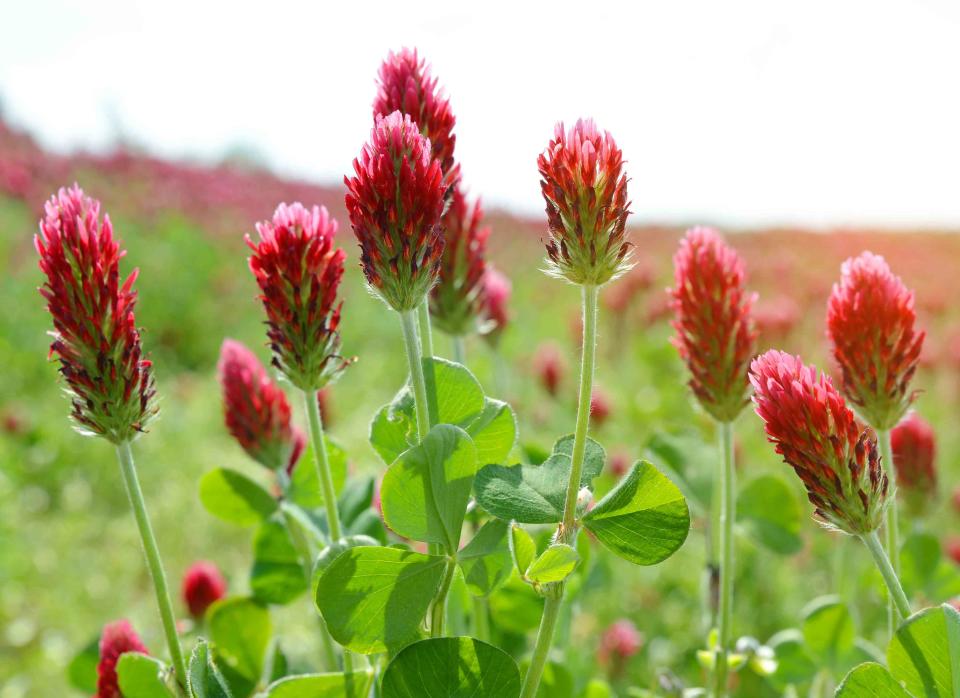
vencavolrab / Getty Images
Healthy soil is an important part of growing plants that thrive. If your yard has poor soil quality, it can lead to root growth problems and plant establishment issues, including drowned roots and increased acidity. While you can certainly fix these problems with amendments like compost and perlite, there is another effective (and eye-catching) solution—growing more plants. Plenty of beautiful varieties, like marigolds and sunflowers, can improve soil quality. Ahead, we spoke to plant experts about species that can reduce compaction, provide essential nutrients, prevent pests, and do more to boost the health of your soil.
Related: 10 Plants That Can Thrive in and Even Improve Compacted Soil
Partridge Pea
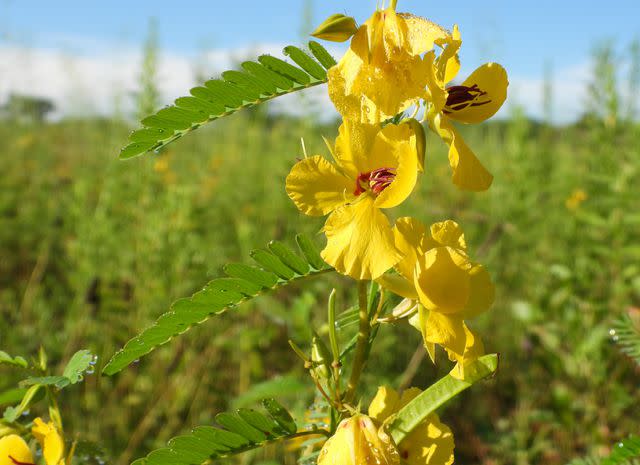
Brian Woolman / Getty Images
Partridge pea (Chamaecrista fasciculata) has bright and showy yellow flowers that flourish from June until September and are followed by flat, maroon seed pods. The plant has root nodules that have nitrogen-fixing bacteria that are released into the soil and enrich other plants, says Mary Phillips, head of native plant habitat strategy and certifications at the National Wildlife Federation. This is especially helpful for poor or depleted soil and can significantly improve overall soil health and fertility over time.
Zones: 3 to 9
Mature size: 2 to 3 feet tall x 2 to 3 feet wide
Care requirements: Full sun to partial shade; tolerant of most soil types
Illinois Bundleflower
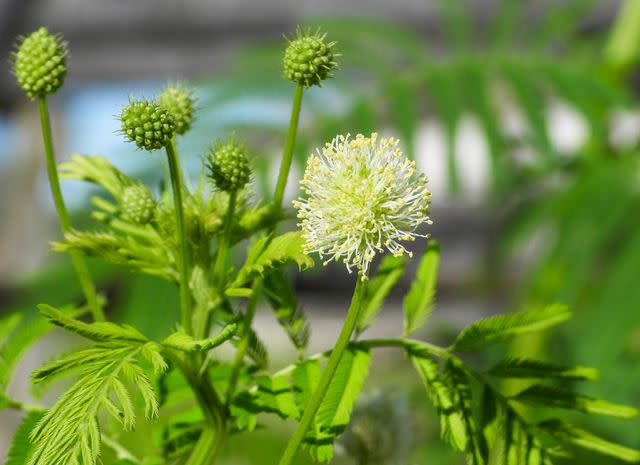
Brian Woolman / Getty Images
Illinois bundleflower (Desmanthus illinoensis) has round, fuzzy white flowers and beautiful foliage that resembles ferns. Its deep taproot breaks up compacted soil and creates channels that benefit surrounding plants, says Phillips. What's more, its leaves, stems, and roots decompose over time, adding organic matter to the soil.
Zones: 3 to 9
Mature size: 2 to 4 feet tall x 1 to 2 feet wide
Care requirements: Full sun; moist, well-drained soil
Wild Lupine
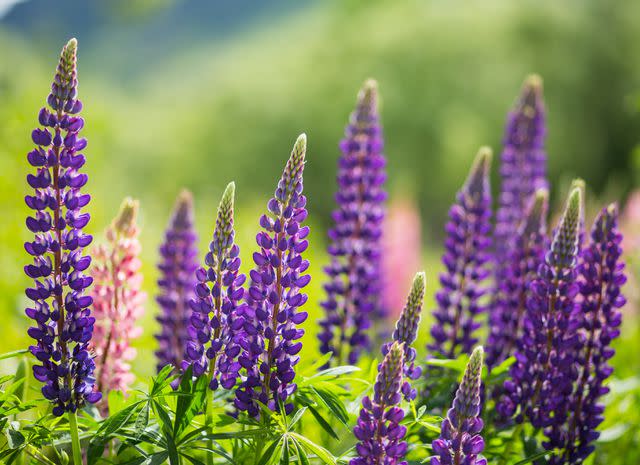
naruedom / Getty Images
Add color to your garden with wild lupine (Lupinus perennis), which produces beautiful blue-violet flowers in dense vertical clusters from April to June. This plant has root nodules that contain nitrogen-fixing bacteria, which is released into the soil and benefits surrounding plants.
Zones: 3 to 8
Mature size: 2 feet tall x 1 to 2 feet wide
Care requirements: Full sun to part shade; dry, sandy soil
Wild Indigo
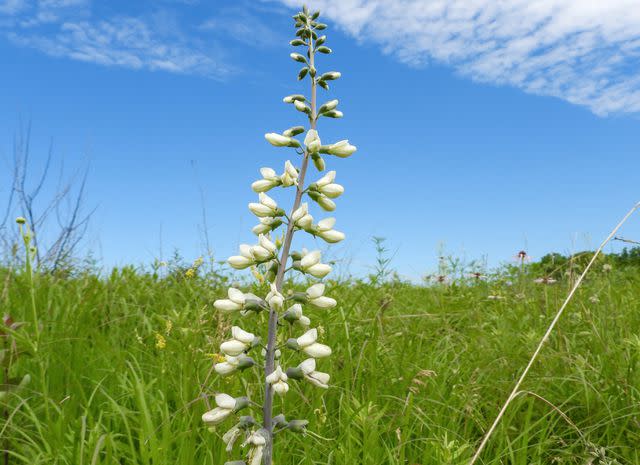
Brian Woolman / Getty Images
Wild indigo (Baptisia spp.) is a native perennial with pea-like blue-green foliage. "In late spring, it blooms with spikes of blue, purple, white, or yellow flowers," says Justin Hancock, horticulturist for Costa Farms. Baptisia is incredibly drought-tolerant, holds up to hot and humid summers, and is rarely nibbled on by deer and rabbits." As a legume, this plant produces little nodules on roots that host beneficial bacteria that improve soil quality.
Zones: 3 to 9
Mature size: 2 to 5 feet tall x 2 to 5 feet wide
Care requirements: Full sun to part shade; well-draining soil
Borage
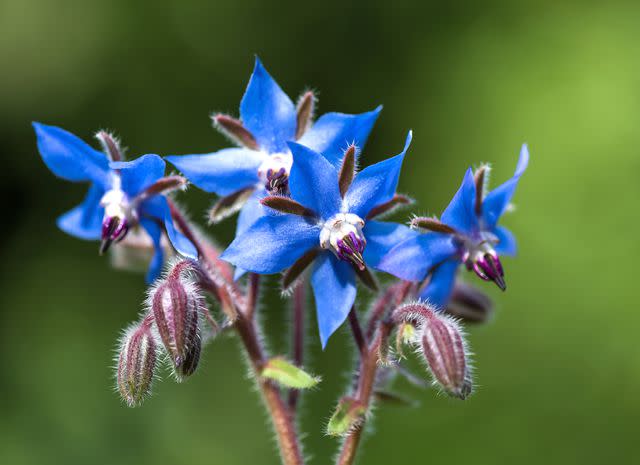
Oksana_Schmidt / Getty Images
Borage (Borago officinalis) has blue, star-shaped flowers that show off throughout summer. "It’s pretty reliably drought resistant and doesn’t mind poor soil," says Hancock. "It self-seeds, so you don’t usually need to buy new plants or seeds every year." Borage has thick roots that help aerate soil, and when the plant dies at the end of the season, the roots break down to provide organic matter to the soil.
Zones: 3 to 10
Mature size: 2 to 3 feet tall x 1 to 2 feet wide
Care requirements: Full sun to part shade; well-draining soil
Marigold
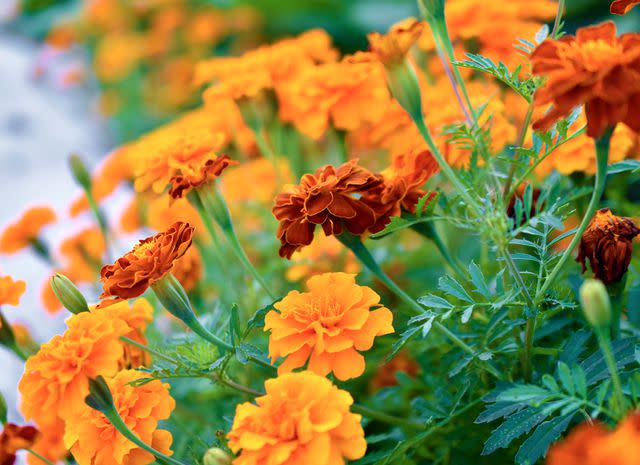
Valeriy Lushchikov / Getty Images
Marigolds (Tagetes spp.) are beloved for their lacy, dark-green foliage and clusters of yellow, orange, or red flowers that bloom all summer long. "Its root system actually releases certain toxins into the soil," says Hancock. "These toxins can be effective against many species of harmful parasitic nematodes." While marigolds are pollinator-friendly, they can help keep your soil free of harmful pests.
Zones: 2 to 11
Mature size: 1 to 3 feet tall x 1 to 2 feet wide
Care requirements: Full sun to part shade; well-draining soil
Big Bluestem
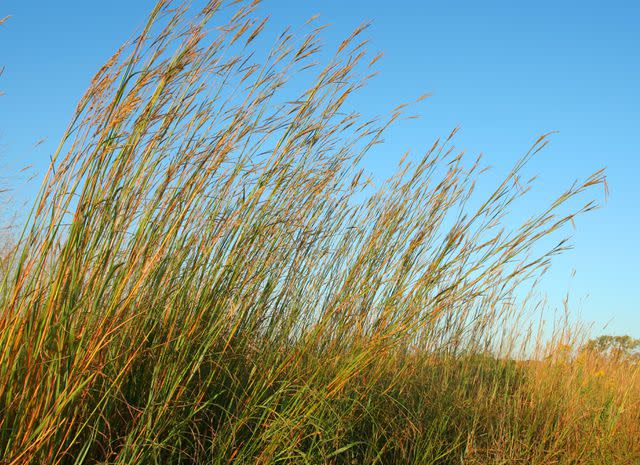
CarbonBrain / Getty Images
An ornamental grass that adds texture and movement to your garden, big bluestem (Andropogon gerardii) has tall stems topped with blue-green leaves that transform into a stunning golden brown come fall, says Misti Mathis, co-owner of Harvest Gold Organics. This grass can help improve aeration and soil drainage.
Zones: 3 to 9
Mature size: 3 to 6 feet tall x 2 to 3 feet wide
Care requirements: Full sun; well-draining soil
Comfrey
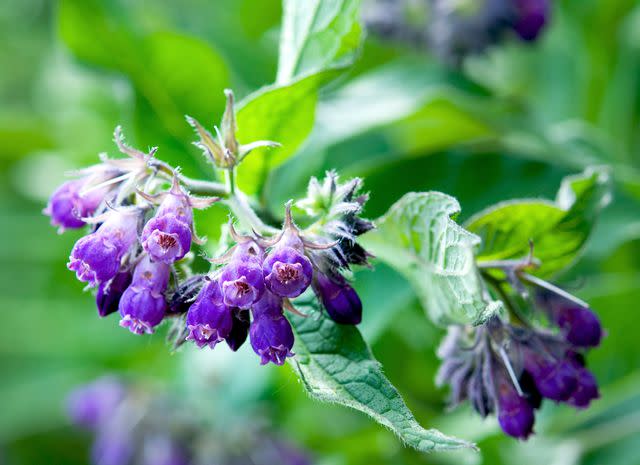
Getty Images
An herbaceous perennial with attractive leaves and bluebell-like, white to pink flowers, Comfrey (Symphytum officinale) blooms from May to June. Its deep roots can reach nutrients other plants can't access. When it dies and decomposes, these nutrients are released back into the soil. "Its deep roots also break up soils such as heavy clay, providing aeration and better water absorption," says Linda Langelo, horticulture specialist at Colorado State University.
Zones: 3 to 9
Mature size: 1 to 3 feet tall x 1 to 2 feet wide
Care requirements: Full sun to part shade; moist, organically rich soil that is well-draining
Red Clover
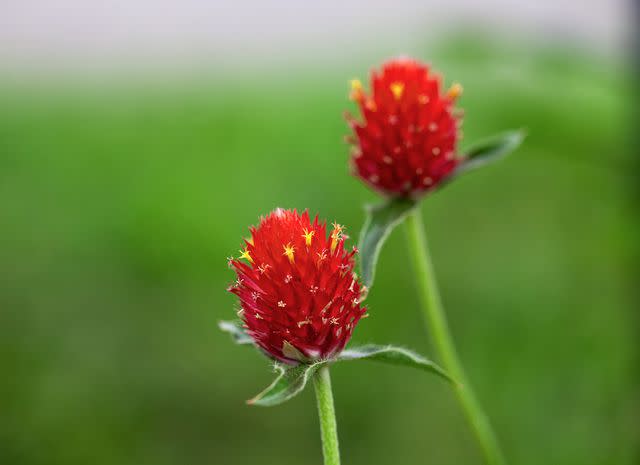
Ali Majdfar / Getty Images
Red clover (Trifolium pratense cv. 'Mammoth') is a short-lived perennial or biennial plant with rose-pink clusters of flowers that fill the garden with color from spring until fall. "This plant is called a 'nitrogen-fixer,'" says Langelo. "It converts nitrogen from the atmosphere and turns that into a soluble form available to the roots of other plants." When pruned, the nitrogen nodules on the roots disperse their nutrients into the soil.
Zones: 5 to 9
Mature size: 1 to 2 feet tall x 1 to 2 feet wide
Care requirements: Full sun; moist, acidic soil that is well-draining
Related: Clover Lawns Are the Landscaping Trend That Calls for Just 4 Mowings Per Year
Hairy Vetch
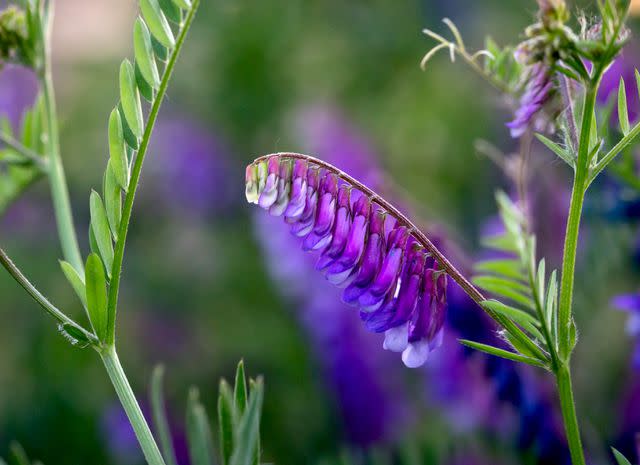
Jessica Loijens / Getty Images
An herbaceous annual or biennial, hairy vetch (Vicia villosa) has thick, hairy stems and leaves with flowers arranged as one-sided clusters on the stalk. "Hairy vetch is a legume plant, which means the roots have nodules with symbiotic rhizobia bacteria," says Langelo. "Rhizobia bacteria convert atmospheric nitrogen to a soluble form available for plant uptake." The plant also improves nutrients and water retention in the soil, while its roots help with soil erosion.
Zones: 4 to 10
Mature size: 3 feet tall x 12 feet wide
Care requirements: Full sun to part shade; moist, well-draining
Bush Indigo
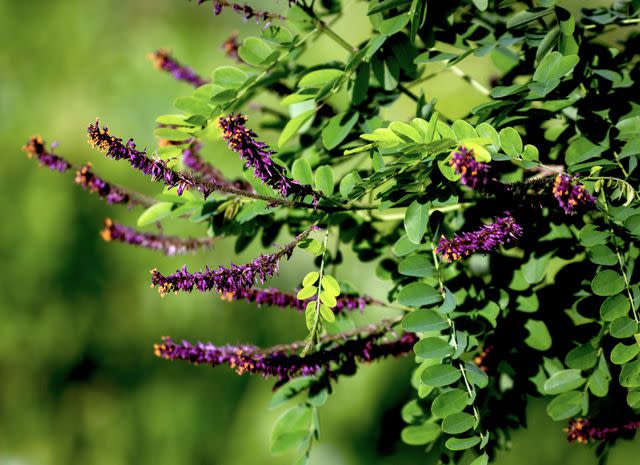
Ricky Kresslein / Getty Images
Bush indigo (Amorpha fruticosa) forms fragrant blossoms in May through June with showy orange-yellow anthers. "This plant fixes nitrogen in the soil," says Langelo. It can be pruned repeatedly for its biomass to add as ground mulch or for the compost pile to add nutrients to the soil and improve soil tilth."
Zones: 4 to 9
Mature size: 4 to 12 feet tall x 6 to 10 feet wide
Care requirements: Full sun to part shade; moist, well-draining
Garden Peas
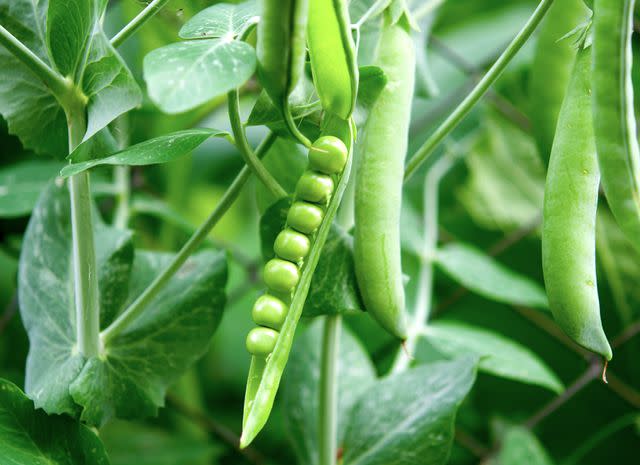
ksena32 / Getty Images
Garden peas are an annual cool-season crop that can be planted in early spring. Like other legume plants, garden peas convert atmospheric nitrogen to a soluble form available for plant uptake. "Any plant in the Fabaceae family can do this," says Langelo. Alfalfa, soybeans, beans, peas, and clover all have nodules that can reduce the need for a chemical nitrogen fertilizer."
Zones: 2 to 9
Mature size: 12 to 18 inches tall x 6 to 12 inches wide
Care requirements: Full sun; fertile, well-draining soil
Sunflowers
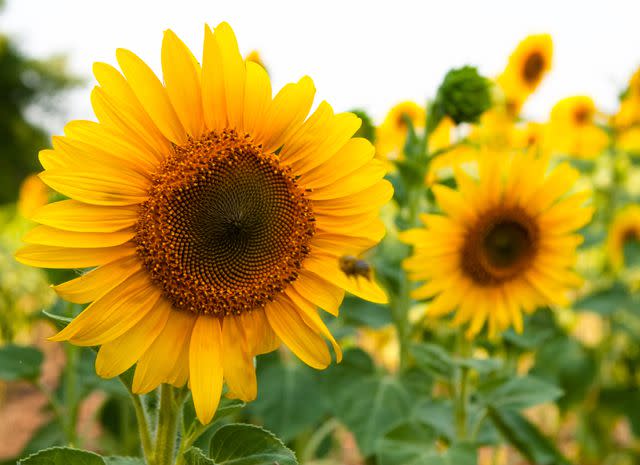
VeryBigAlex / Getty Images
Sunflowers (Helianthus annuus) boast beautiful blooms with orange-yellow rays and brown to purple center disks. Annual sunflowers can bloom all summer long. "Sunflowers are used in soil conservation for their taproot and root structure," says Langelo. "The root structure alleviates soil compaction but helps hold the soil together." This plant can also remove heavy metals, like lead, arsenic, zinc, chromium, cadmium, copper, and manganese, from the soil.
Zones: 2 to 11
Mature size: 3 to 10 feet tall x 1 to 3 inches wide
Care requirements: Full sun; fertile, moist, well-draining soil
Alfalfa
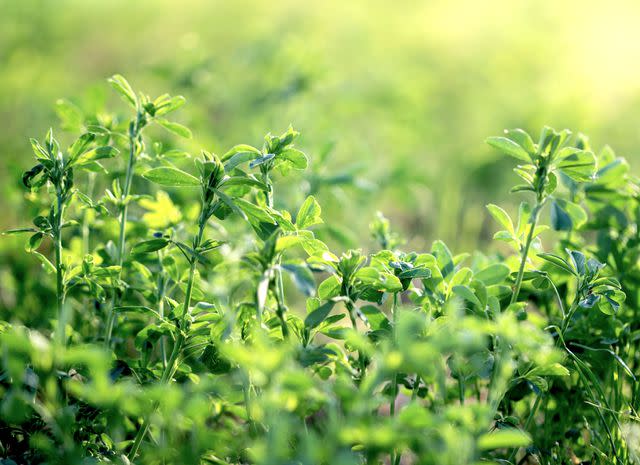
GoodLifeStudio / Getty Images
An herbaceous perennial with a deep taproot that is used as a forage crop, alfalfa (Medicago sativa) forms eye-catching flowers that range from purple to yellow. "As a perennial, it contributes to the organic matter deep in the soil," says Langelo. "Its root dies, and new roots grow. The older roots decompose and in doing this, alfalfa increases the microbial activity of the soil."
Zones: 2 to 9
Mature size: 2 to 3 feet tall x 3 to 5 feet wide
Care requirements: Full sun; fertile, well-draining soil
Milk Thistle
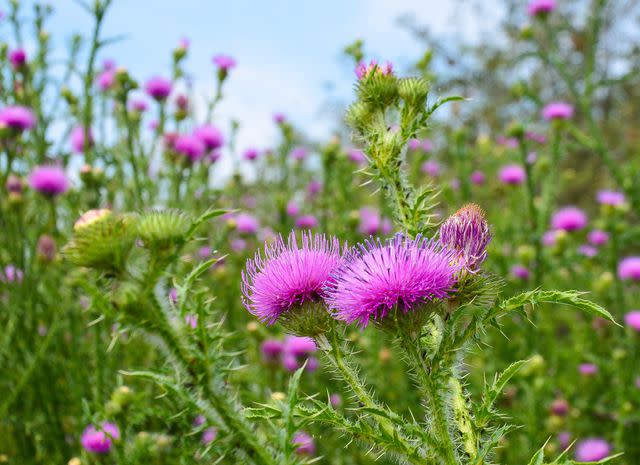
Natka-i / Getty Images
Milk thistle (Silybum marianum) has pink-purple flowers that bloom from July to August and has a showy rosette of green leaves with distinctive white marbling. "This plant can penetrate deeply with its roots and break up subsoil," says Langelo. "This helps bring iron closer to the surface." Milk thistle is also high in potassium, which adds to the soil through the decomposition of its biomass.
Zones: 4 to 10
Mature size: 6 to 8 feet tall x 1 to 3 feet wide
Care requirements: Full sun; moist, loamy soil that is well-draining
Chicory
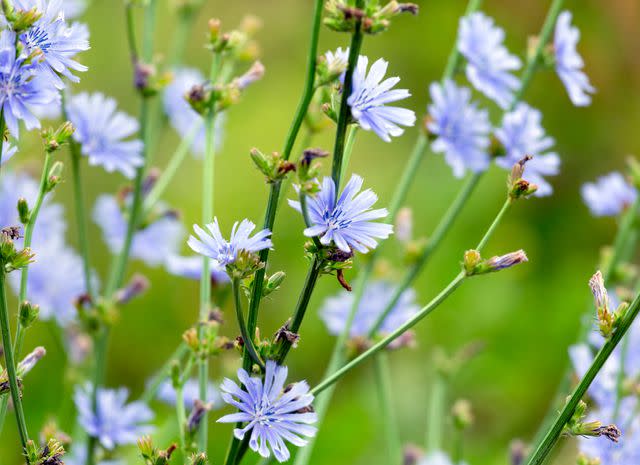
Ailime / Getty Images
Chicory (Cichorium intybus) is a perennial with clear blue flowers that bloom in May or June and last until around October. "It fixes potassium in the soil," says Langelo. "With its deep tap root, it brings minerals from deeper in the soil closer to the surface and closer to the root zone of other plants."
Zones: 3 to 8
Mature size: 2 to 4 feet tall x 1 to 2 feet wide
Care requirements: Full sun; well-draining soil
Related: What Is Chicory Root, and Should You Try Chicory Coffee?
Fenugreek
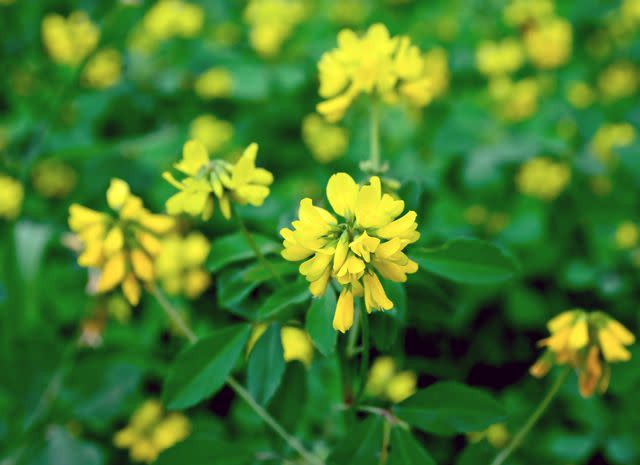
mrhighsky / Getty Images
Fenugreek (Trigonella foenum-graecum) is an annual herb with light green leaves and small white flowers. "The flowers resemble that of a butterfly," says Langelo. "They can be white, lemon-yellow, or purplish-blue." This plant can be tilled into the soil after the season is over to add nutrients. It also helps break up clay soils and is a great winter manure crop that helps control nematodes.
Zones: 9 to 11
Mature size: 24 inches tall x 3 to 6 inches wide
Care requirements: Full sun to partial shade; well-draining soil
Garlic
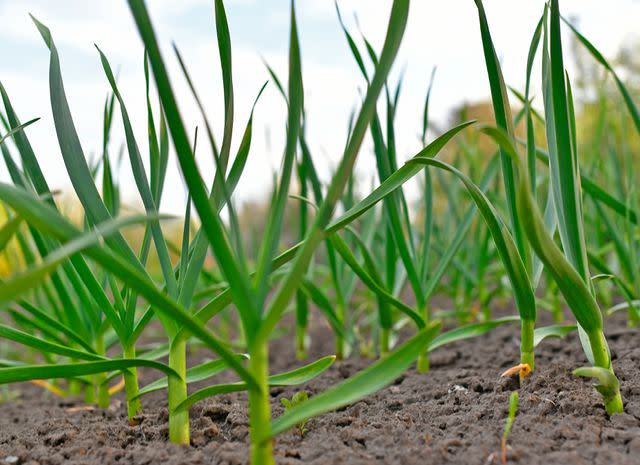
Artem Gromov / Getty Images
Garlic (Allium sativum) works to remove high sulfur from the soil. "Garlic is a good fertilizer for the soil because it's rich in phosphorus and potassium," says Langelo. "Phosphorus plays an important role in photosynthesis, cell division, metabolism of sugars, and energy transfer and storage. The potassium helps keep your plant's leaves, fruits, and flowers healthy."
Zones: 5 to 7
Size: 12 to 24 inches tall x 6 to 8 inches wide
Care requirements: Full sun; loose, fertile soil that is well-draining
Common Garden Beans
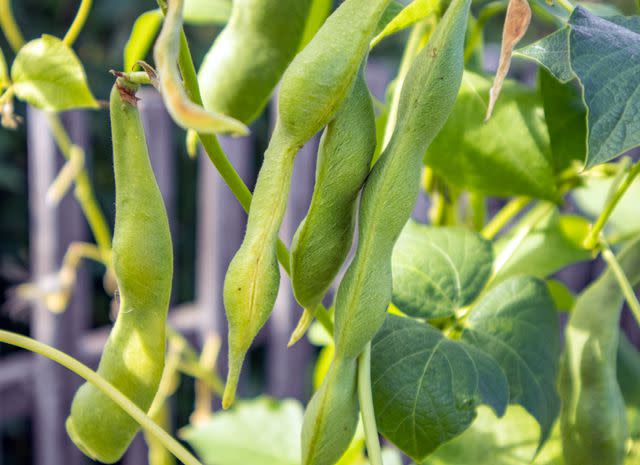
ClaireLucia / Getty Images
Common garden beans (Phaseolus vulgaris ) are pole bean or bush varieties. "The plants in this family have pea-like pods," says Langelo. These plants enhance the nitrogen in the soil, increase organic matter, stimulate soil biological activity, improve soil structure, and can be tilled into the soil for added nutrients.
Zones: 2 to 11
Size: 2 to 15 feet tall x 2 to 3 feet wide
Care requirements: Full sun; loose, loamy, moist soil that is well-draining
Caraway
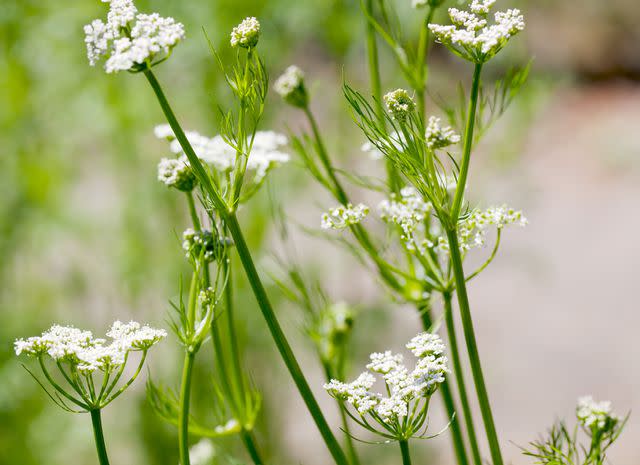
Mantonature / Getty Images
Caraway (Carum carvi) grows as a feathery, mounded bush-like plant and forms clusters of white-and-pink flowers in its second year. "In the garden, caraway can be interplanted with beans, peas, and other annual vegetables and creates fertile soil," says Langelo. "Its deep-rooted system breaks up compacted soils, which improves both structure and drainage."
Zones: 4 to 10
Size: 12 to 30 inches tall x 15 inches wide
Care requirements: Full sun to part shade; loamy, well-draining soil
Crimson Clover
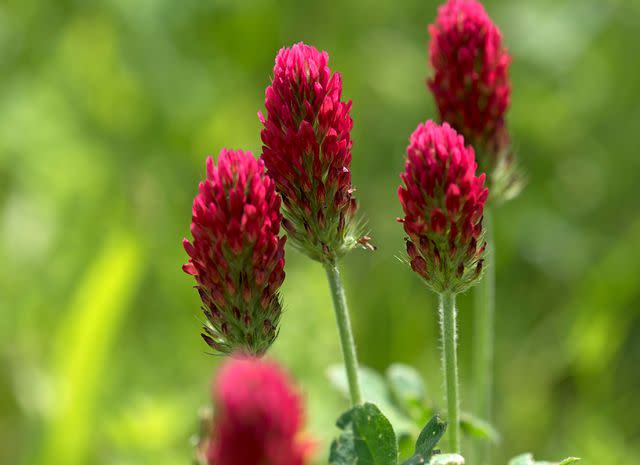
Getty Images
Crimson clover (Trifolium incarnatum) is an upright annual herb with spring-blooming red flowers. Langelo says it's commonly grown as a cover crop and can fix nitrogen levels in the soil.
Zones: 6
Size: 8 to 20 inches tall x 12 to 24 inches wide
Care requirements: Full sun to part shade; loamy, well-draining soil
Read the original article on Martha Stewart.

